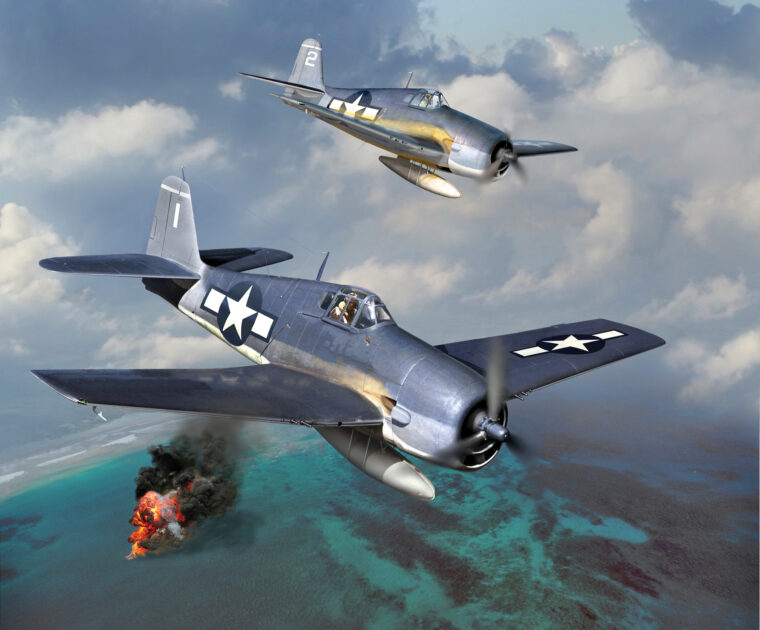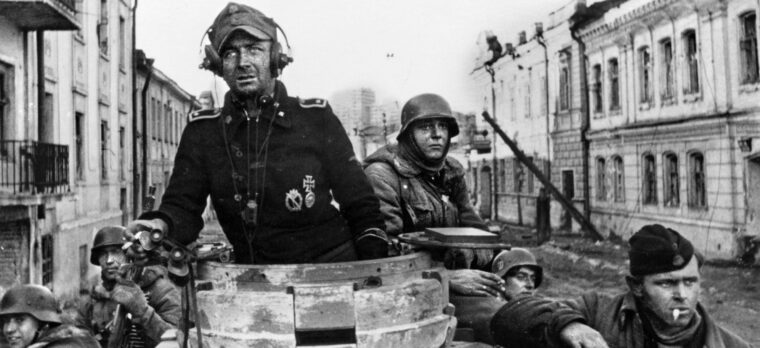
WWII
Italy’s Daredevil Torpedo Riders
By Chuck LyonsOn a dark night in September 1941, moving at periscope depth, an Italian submarine edged into Gibraltar Bay near the British harbor. Read more


WWII
On a dark night in September 1941, moving at periscope depth, an Italian submarine edged into Gibraltar Bay near the British harbor. Read more

WWII
The tranquility of early dawn on June 15, 1944, was interrupted by the sounds of powerful naval guns and the roar of amtraks churning the water. Read more

WWII
German engineer Hellmuth Walter stretched his shoulders, rubbed his face, and eased his hat back on his head as he walked down the wooden dock toward a covered deck. Read more

WWII
The night of June 5/6, 1944, was pretty much like every other night since the Germans had occupied Normandy and the Cotentin Peninsula in the summer of 1940: dark, quiet, chilly, and mostly boring. Read more

WWII
To the crews of the Royal Air Force Bomber Stream Droning Toward Germany in the early morning hours of December 3, 1942, this mission seemed indistinguishable from the countless others that had preceded it. Read more

WWII
On August 2, 1945, two weeks prior to Japan’s surrender, the highest ranking Japanese officer captured during the war in the Pacific was taken on the island of Morotai, Dutch New Guinea. Read more

WWII
Lieutenant Hollis Hills had every reason to be puzzled. His guns had just raked the Japanese fighter ahead of him, the rounds striking home along the enemy’s fuselage and wing roots. Read more

WWII
Operation Barbarossa, the German invasion of the Soviet Union in June 1941, showed the world the extent of Nazi brutality. Read more

WWII
German Luftwaffe pilot First Lieutenant Gordon Gollob moved in for the kill at midafternoon on December 18, 1939, with his Messerschmitt Bf 110 against a formation of seven British Vickers Wellington medium bombers heading home from their bomb run against German battle cruisers in Wilhelmshaven harbor. Read more

WWII
Deep snow blanketed the steppes surrounding the northeastern Ukrainian city of Kharkov on February 6, 1943. The soldiers of Major Kurt Meyer’s reconnaissance battalion of SS Panzer Division Leibstandarte Adolf Hitler shivered from the cold. Read more

WWII
The four ships that raced into battle on December 13, 1939, off the mouth of the River Plate were, as historian and novelist Len Deighton tartly observed, “three different answers to the question that had plagued the world’s navies for half a century: what should a cruiser be?” Read more

WWII
As summer neared its end in early September 1944, the U.S. Army raced across northern France toward the German border. Read more

WWII
Few airplanes can claim the honor of being credited with changing the course of World War II, but the Douglas A-20 Havoc twin-engine light bomber is one that can. Read more

WWII
Much of what we know today about World War II are the visual images—both still and moving—that combat photographers took to document all phases of this costly human tragedy. Read more

WWII
Erik Shilling, a pilot of the American Volunteer Group (AVG) Flying Tigers, faced the angry mob. There were about 30 of them, all in loincloths and leather vests with no buttons. Read more

WWII
For more than a century the Middle East was the British Empire’s vital link between the Mediterranean and India. Read more

WWII
The Heinkel He-177 Greif (Griffin) was to become the only long-range heavy bomber operated by the Luftwaffe during World War II. Read more

WWII
Clarence M. “Monty” Rincker was born in Cheyenne, Wyoming, on September 8, 1922. When he was a year old, his parents bought a farm in eastern Wyoming and the family moved there. Read more

WWII
In one of the most gripping scenes of the 1960 motion picture Sink the Bismarck! the viewer is witness to the climactic moment of the Battle of the Denmark Strait on May 24, 1941. Read more

WWII
As the winter of 1944-1945 slowly gave way to spring, the combined Allied armies ground their way into Germany. Read more